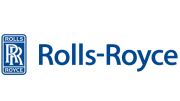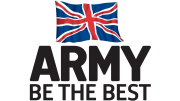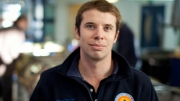The Rolls-Royce EJ200 jet engine was designed with one purpose, to sit in a Eurofighter Typhoon fighter plane, it was not designed to be used in a jet car. The jet needs to think it is sitting in a Typhoon and recieving the inputs it would expect from the aircraft. These inputs are the sensor values indicatiing of health the various aircraft systems, whether the aircraft is in flight or on the ground and the pilots controls.
The Rolls-Royce Spey engines used in Thrust SSC were mechanicaly controlled via linkages, where as the EJ200 is digital. The engine has a computer connected to it called a DECU, it meaures the engine perfomance and opens the valves controling fuel and air depending on the sensors. This leads to much better fuel efficiency and engine perfomance. However should our computer software loose communicaion to the DECU, the engine defults to a 'get you home' state, so still provides thrust to stop the aircraft falling out of the sky. We don't want this, we need the engine to stop if there is a software or mechanical glitch. To counter this we have two communication links to the jet engine, a computer controled fuel shut off swithch and a manually operated fuel shut off valve.
In order to fit the state-of the-art EJ200 into the car BLOODHOUND needed to develop a replacement for some of the Flight Control Systems that the engine expected to see. I worked closely with my colleague AQMS Mark Edwin, who is a Warrant Officer from the Royal Electrical & Mechanical Engineers (attached to the project) and Rolls-Royce engineers to develop a bespoke BLOODHOUND control system for the EJ200.
Mark, whose background is in military aviation, focused on the electronics and physical side of things whilst I focused on the software. We built the control system using MATLAB, one of our sponsors and their real time Operating System, XPC Target. The software was run on PC104 computers donated to us by Diamond Point International.
Amongst others the control system included airframe inputs such as ‘weight on the wheels’ which makes the engine think it is taxiing on a runway and so gives better throttle response when Andy presses the right pedal.
We had checked our jet engine control systems in December 2012 with a Rolls-Royce EJ200 jet engine simulator which proved to be successful. Unfortunately because of the way the simulator worked by connecting our kit we removed some of Rolls-Royce’s flight control system, so lost some functionality, we were unable to test starting the jet or throttling it up. It was decided the next step should be a full engine test with one of our “EJ’s” and our control system. It then became a waiting game for a spare slot on the test beds.
At 10am on the 18th April we received a call from Rolls-Royce saying that we had a slot on test bed 103 with one of our EJ’s EN741. The engine had been passed off on the bed by Rolls-Royce engineers and was ready for testing with our in car systems, there were 2 high priority engines waiting for the test bed behind ours, we didn’t have much time. We had packed our equipment in anticipation of the call and got to the site around 11am. Our equipment was set up within the hour and control was handed over to us at 12:30. Immediately we performed a regression test using the same tests on the simulator. Success! The engine worked first time. The engine was then powered down at this point.
The next test was more of a concern to me as we hadn't had opportunity previously to test my software code. We had to engage the test bed air starter system upon the EJ200 issuing an engine start command. Similar to a car's engine wihich uses an electric starter motor to turn the engine over causing the spary plugs to spark, the EJ200 uses compressed air to turn a small turbine which in turn spins the jet engine which has sparkers to start the combustion. We had followed the information from Rolls as best possible, but it’s always the unknown unknowns that get you in these situations. One of the Rolls-Royce test bed operators moved the throttle to 10%, there was an anxious couple of seconds, but sure enough the air start started and the engine started to turn. We knew at this point we’d be unlucky if our system didn’t work.
Next test was a manual run of the engine with our control system, this time the high energy igniters (responsible for the ignition of the burners), were energised. Again the throttle was moved to 10%, engine spooled up and was under its own power within a matter of seconds. We followed the test plan and moved the engine to maximum throttle without the reheat, known as max dry. Success! We are pushing out about six tonnes of thrust at this point, in the test room shielded behind layers of glass it sounded very much like sitting in an airline seat. Next we pushed the engine into reheat and up to max reheat (which the Americans call afterburner) and produced close to nine tonnes of thrust.
The engine responded quickly, cameras and eyes have to adjust to the sudden intense brightness that is reheat. If you were standing a meter away from the nozzle at this point the noise, which reached 160 decibels, you would begin to liquefy your internal organs!
The next test was a scripted Hakskeen Pan run to simulate what we might be doing in the desert, this data will be used for later analysis and modelling.
Testing was successfully completed at around 2pm, a great result for BLOODHOUND as we now know our control systems work perfectly. Many thanks to the Rolls-Royce engineers, without whom we this would not have been possible.
Obviously as an Engineer this was a dream couple of days for me, one of the things I have constantly been impressed with it the level of support and can do attitude of Rolls-Royce and our other sponsors. It may seem that I have to say that, but I am very sincere. The EJ200 itself is a work of art it’s unrestrained raw power. Its easy to take the objects around us in our every day life for granted, your phone, your car etc. but just think of the history and ingenuity that was required to get us to this level of understanding. Think of the work that has been put into this machine, the fact that so many different pieces, so many different people have to come together and that it works. It’s easy to be a little cynical about things, I guess it the British way, but I truly felt for a moment, as it says on the two pound coin in my pocket, that I was standing on the shoulders of giants.
Joe Holdsworth, May 2013






